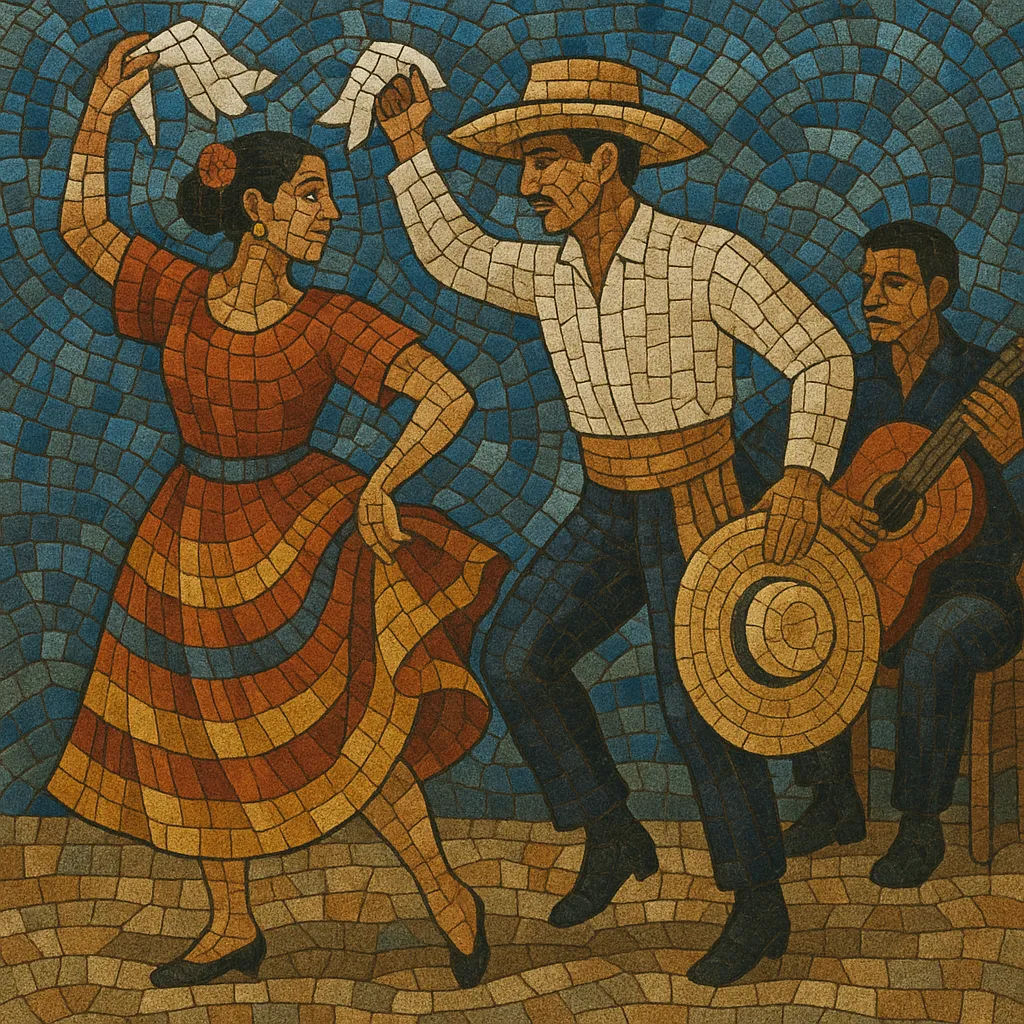Marinera is a Peruvian coastal song-and-dance genre known for its elegant courtship pantomime performed with handkerchiefs. It blends Hispanic melodic-harmonic language with Afro-Peruvian rhythms and Andean phrasing, producing a distinctive swing based on hemiola between 6/8 and 3/4.
There are several regional styles: the more urbane and lyrical marinera limeña (from Lima), the brisk and virtuosic marinera norteña (centered in Trujillo, often danced with dramatic footwork), and the marinera serrana (highland variant with Andean coloring). Instrumentation commonly features Spanish guitars and cajón, with quijada (jawbone), palmas (handclaps), and cajita in Afro-Peruvian contexts; in the north, brass or town bands may accompany competitions.
Peru’s marinera crystallized in the late 19th century from the older zamacueca tradition, a family of couple dances that circulated across the Pacific coast of South America. In 1879, the Peruvian writer Abelardo Gamarra (“El Tunante”) popularized the name “marinera” to honor the Peruvian Navy (marina) during the War of the Pacific. The style combined Hispanic melodic idioms (fandango and seguidilla lineage) with Afro-Peruvian rhythmic sensibilities and some Andean melodic turns, producing a refined salon-and-street hybrid.
By the 1880s–1890s, marinera was already a staple of Lima’s criollo salons and neighborhood peñas, typically sung and accompanied by guitars, cajón, and handclaps. The characteristic rhythmic tension between 6/8 and 3/4 (hemiola) became a hallmark, supporting playful, flirtatious lyrics and a choreographic dialogue using handkerchiefs.
Through the 20th century, marinera became emblematic of Peru’s coastal criollo identity, appearing in recordings, radio, and festivals. The National Marinera Contest in Trujillo (established in the 1960s) formalized competitive standards and popularized the norteña variant nationwide. Singers and guitar trios in Lima’s escena criolla kept the limeña tradition alive in peñas and on records.
Marinera remains one of Peru’s most recognizable musical emblems. It is taught in schools and academies, showcased in national holidays, and continues to evolve in arrangement—ranging from intimate guitar/cajón settings to full brass band renditions in the north—while preserving its core rhythmic sway, courtship narrative, and handkerchief choreography.


